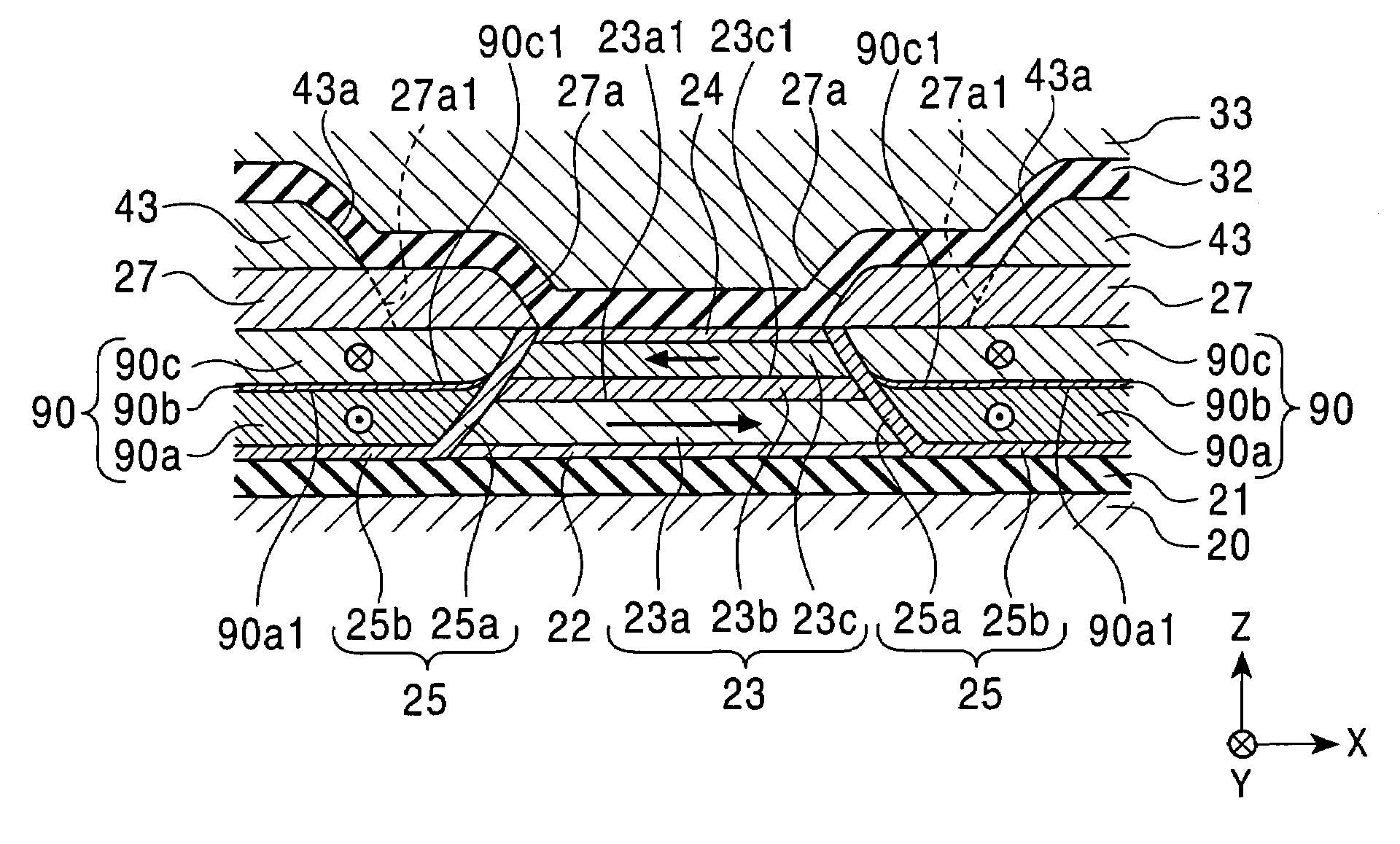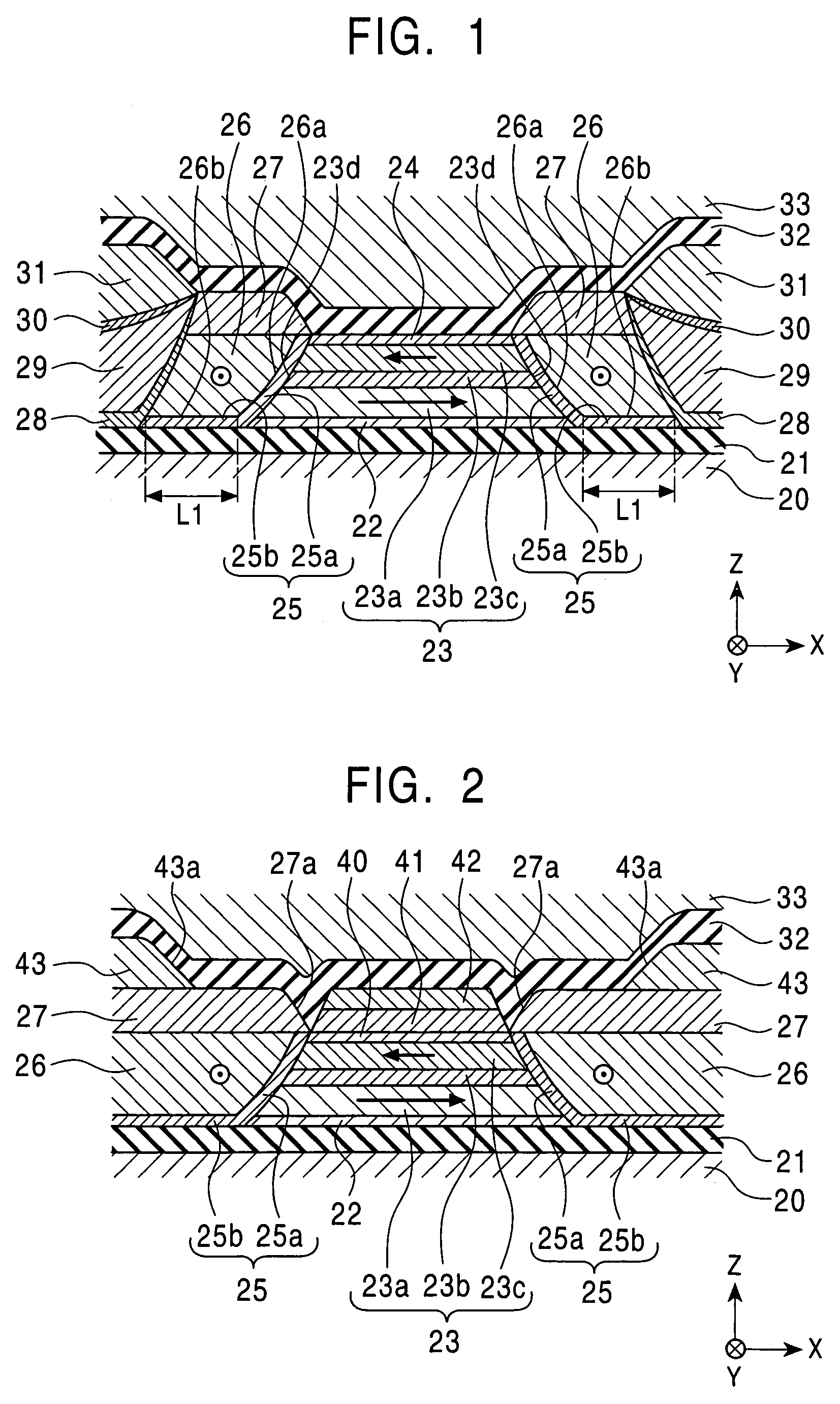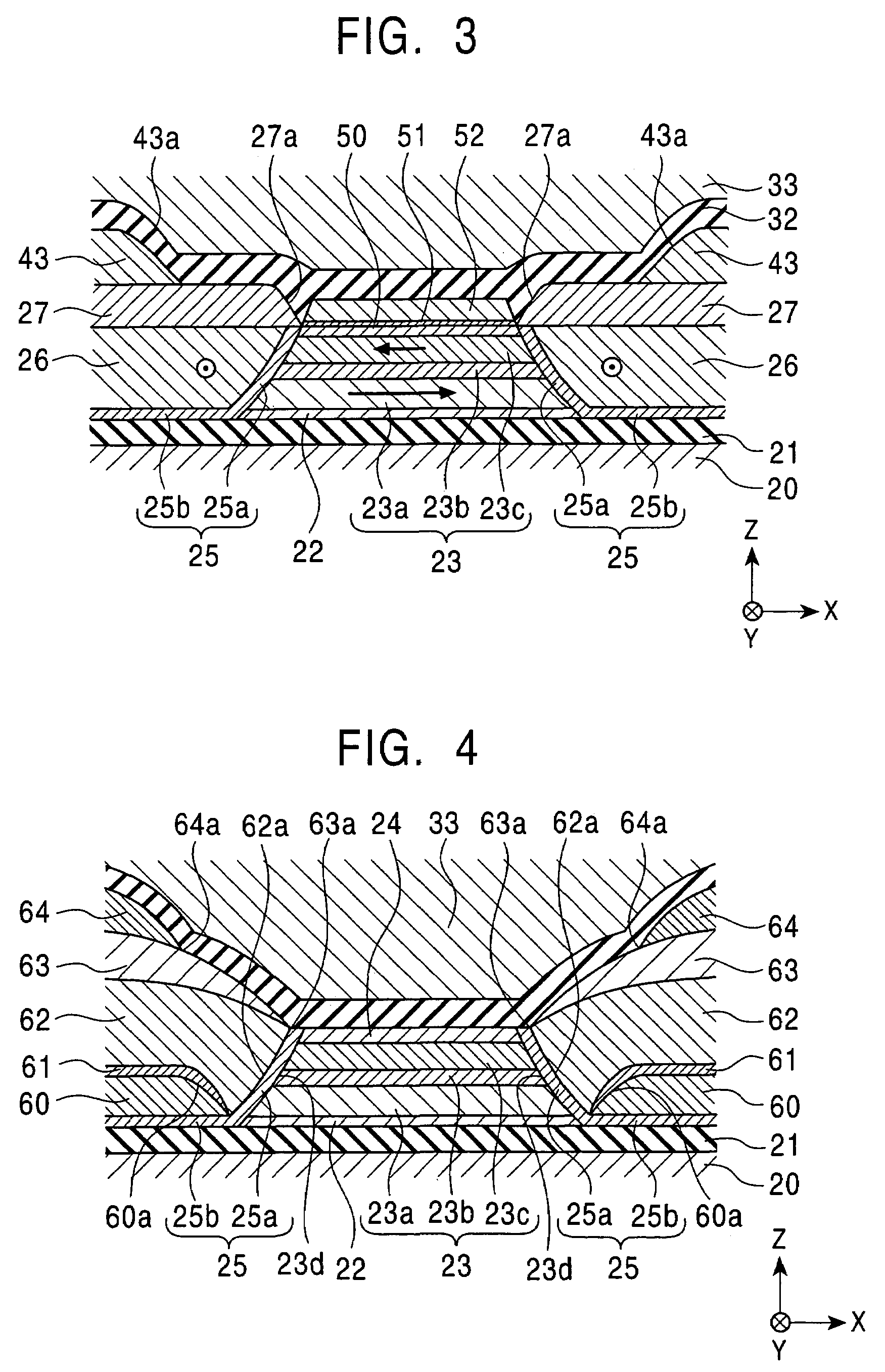Magnetic detecting element having pinned magnetic layers disposed on both sides of free magnetic layer
a magnetic layer and detecting element technology, applied in the field of magnetic detecting elements, can solve problems such as difficulty in further shortening the gap length, and achieve the effect of increasing the difference between the ease of conduction electron flow and increasing the resistance change r
- Summary
- Abstract
- Description
- Claims
- Application Information
AI Technical Summary
Benefits of technology
Problems solved by technology
Method used
Image
Examples
second embodiment
[0181]FIG. 2 is a partial sectional view showing the structure of a magnetic detecting element according to the present invention, as viewed from a surface facing a recording medium. In FIG. 2, a layer denoted by the same reference numeral as in FIG. 1 comprises the same material and has the same thickness and shape as those of the corresponding layer shown in FIG. 1 unless otherwise specified.
[0182]The magnetic detecting element shown in FIG. 2 is different from that shown in FIG. 1 in that hard bias layers are not formed on the outsides of the respective pinned magnetic layers 26, but a ferromagnetic layer 41 and an antiferromagnetic layer 42 are laminated on the free magnetic layer 23 through a separating layer 40 comprising alumina.
[0183]An exchange anisotropic magnetic field is produced at the interface between the ferromagnetic layer 41 and the antiferromagnetic layer 42 to pin magnetization of the ferromagnetic layer 41 in the X direction shown in the drawing. Furthermore, ma...
third embodiment
[0185]FIG. 3 is a partial sectional view showing the structure of a magnetic detecting element according to the present invention, as viewed from a surface facing a recording medium. In FIG. 3, a layer denoted by the same reference numeral as in FIG. 1 comprises the same material and has the same thickness and shape as those of the corresponding layer shown in FIG. 1 unless otherwise specified.
[0186]The magnetic detecting element shown in FIG. 3 is different from that shown in FIG. 1 in that hard bias layers are not formed on the outsides of the respective pinned magnetic layers 26, but an underlying layer 51 and a hard magnetic layer 52 are laminated on the free magnetic layer 23 through a separating layer 50 comprising alumina.
[0187]The underlying layer 51 comprises Cr, Ta or a Ta / Cr laminated film, and the hard magnetic layer 52 comprises Co—Pt. The hard magnetic layer 52 is magnetized in the X direction. Furthermore, magnetostatic coupling occurs between the hard magnetic layer ...
fourth embodiment
[0191]FIG. 4 is a partial sectional view showing the structure of a magnetic detecting element according to the present invention, as viewed from a surface facing a recording medium. In FIG. 4, a layer denoted by the same reference numeral as in FIG. 1 comprises the same material and has the same thickness and shape as those of the corresponding layer shown in FIG. 1 unless otherwise specified.
[0192]The magnetic detecting element shown in FIG. 4 is different from that shown in FIG. 1 in that separating layers 61 comprising a nonmagnetic material, pinned magnetic layers 62, antiferromagnetic layers 63 and electrode layers 64 are laminated in that order on respective hard bias layers 60 formed on both sides of the free magnetic layer 23.
[0193]Each of the hard bias layers 60 has an inclined or curved inner end surface 60a. Therefore, the thickness of each hard bias layer 60 gradually decreases nearer to the free magnetic layer 23. With the hard bias layers 60 each having such a tapered...
PUM
| Property | Measurement | Unit |
|---|---|---|
| track width | aaaaa | aaaaa |
| blocking temperature | aaaaa | aaaaa |
| temperature | aaaaa | aaaaa |
Abstract
Description
Claims
Application Information
 Login to View More
Login to View More - R&D
- Intellectual Property
- Life Sciences
- Materials
- Tech Scout
- Unparalleled Data Quality
- Higher Quality Content
- 60% Fewer Hallucinations
Browse by: Latest US Patents, China's latest patents, Technical Efficacy Thesaurus, Application Domain, Technology Topic, Popular Technical Reports.
© 2025 PatSnap. All rights reserved.Legal|Privacy policy|Modern Slavery Act Transparency Statement|Sitemap|About US| Contact US: help@patsnap.com



